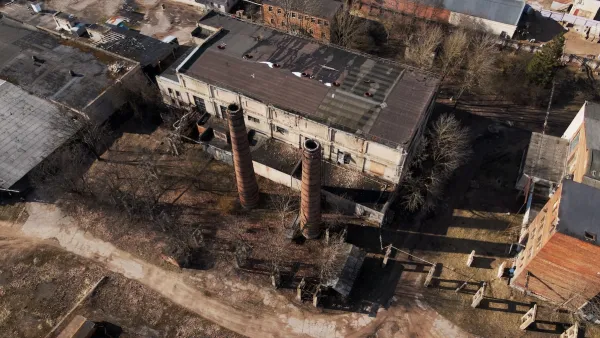Bioremediation uses plants, fungi, and microbes to clean up polluted land in place, offering a nature-based option for restoring contaminated sites in overburdened communities.

Brownfields — polluted and often abandoned industrial or commercial sites — are disproportionately located in low-income communities of color, due to a legacy of redlining and discriminatory land use practices. Traditional cleanup methods, such as excavation and off-site landfill disposal, can be costly and harmful, often shifting the pollution burden to other vulnerable areas. These conventional strategies not only perpetuate environmental injustices but can also release additional contaminants into surrounding neighborhoods.
Bioremediation offers a more equitable, cost-effective, and environmentally sound alternative by using living organisms like fungi, bacteria, and plants to detoxify contaminated soil and groundwater in place. This method, known as in situ remediation, avoids the harmful impacts of excavation and landfill dumping. Researchers like Dr. Danielle Stevenson are pioneering community-led bioremediation projects that restore ecological health while empowering residents to reclaim and transform degraded spaces into parks, affordable housing, and green infrastructure. Examples from Los Angeles, Chicago, and Australia demonstrate its practical potential and applicability.
By incorporating bioremediation into policy, land-use planning, and just transition strategies, communities can reduce health risks, support local economic development, and advance environmental justice. Policymakers can help scale this approach through funding, regulatory reforms, and workforce development. Ultimately, bioremediation is not just a method for cleaning up toxic sites—it’s a tool for healing communities, fostering resilience, and ensuring that those most harmed by industrial pollution are central to the restoration process.
FULL STORY: Bioremediation as an Equitable Approach to Brownfield Cleanup

Maui's Vacation Rental Debate Turns Ugly
Verbal attacks, misinformation campaigns and fistfights plague a high-stakes debate to convert thousands of vacation rentals into long-term housing.

Planetizen Federal Action Tracker
A weekly monitor of how Trump’s orders and actions are impacting planners and planning in America.

In Urban Planning, AI Prompting Could be the New Design Thinking
Creativity has long been key to great urban design. What if we see AI as our new creative partner?

King County Supportive Housing Program Offers Hope for Unhoused Residents
The county is taking a ‘Housing First’ approach that prioritizes getting people into housing, then offering wraparound supportive services.

Researchers Use AI to Get Clearer Picture of US Housing
Analysts are using artificial intelligence to supercharge their research by allowing them to comb through data faster. Though these AI tools can be error prone, they save time and housing researchers are optimistic about the future.

Making Shared Micromobility More Inclusive
Cities and shared mobility system operators can do more to include people with disabilities in planning and operations, per a new report.
Urban Design for Planners 1: Software Tools
This six-course series explores essential urban design concepts using open source software and equips planners with the tools they need to participate fully in the urban design process.
Planning for Universal Design
Learn the tools for implementing Universal Design in planning regulations.
planning NEXT
Appalachian Highlands Housing Partners
Mpact (founded as Rail~Volution)
City of Camden Redevelopment Agency
City of Astoria
City of Portland
City of Laramie





























